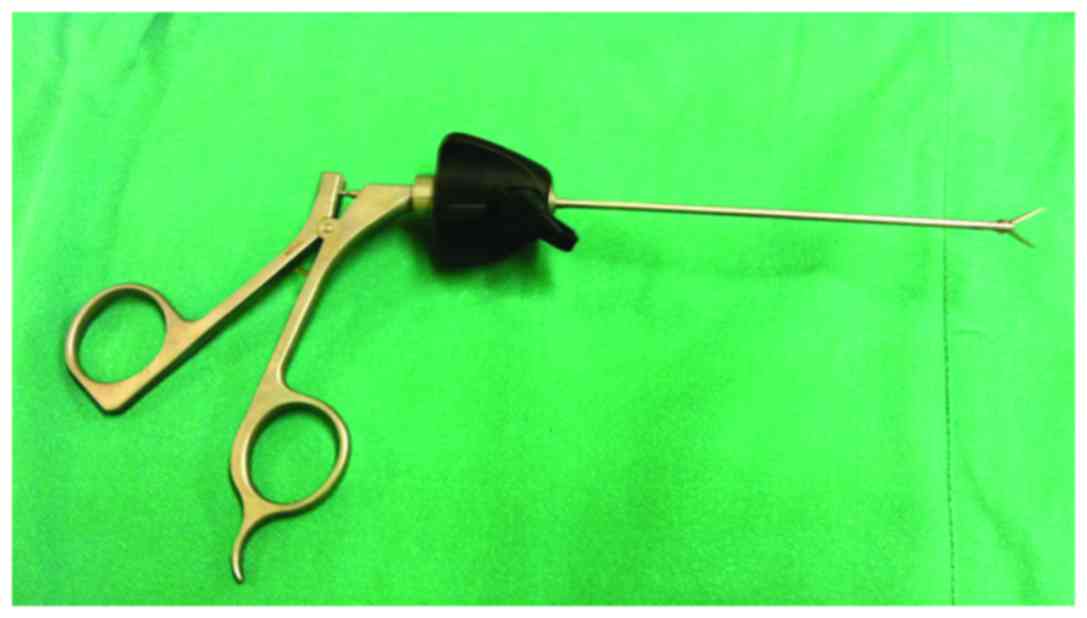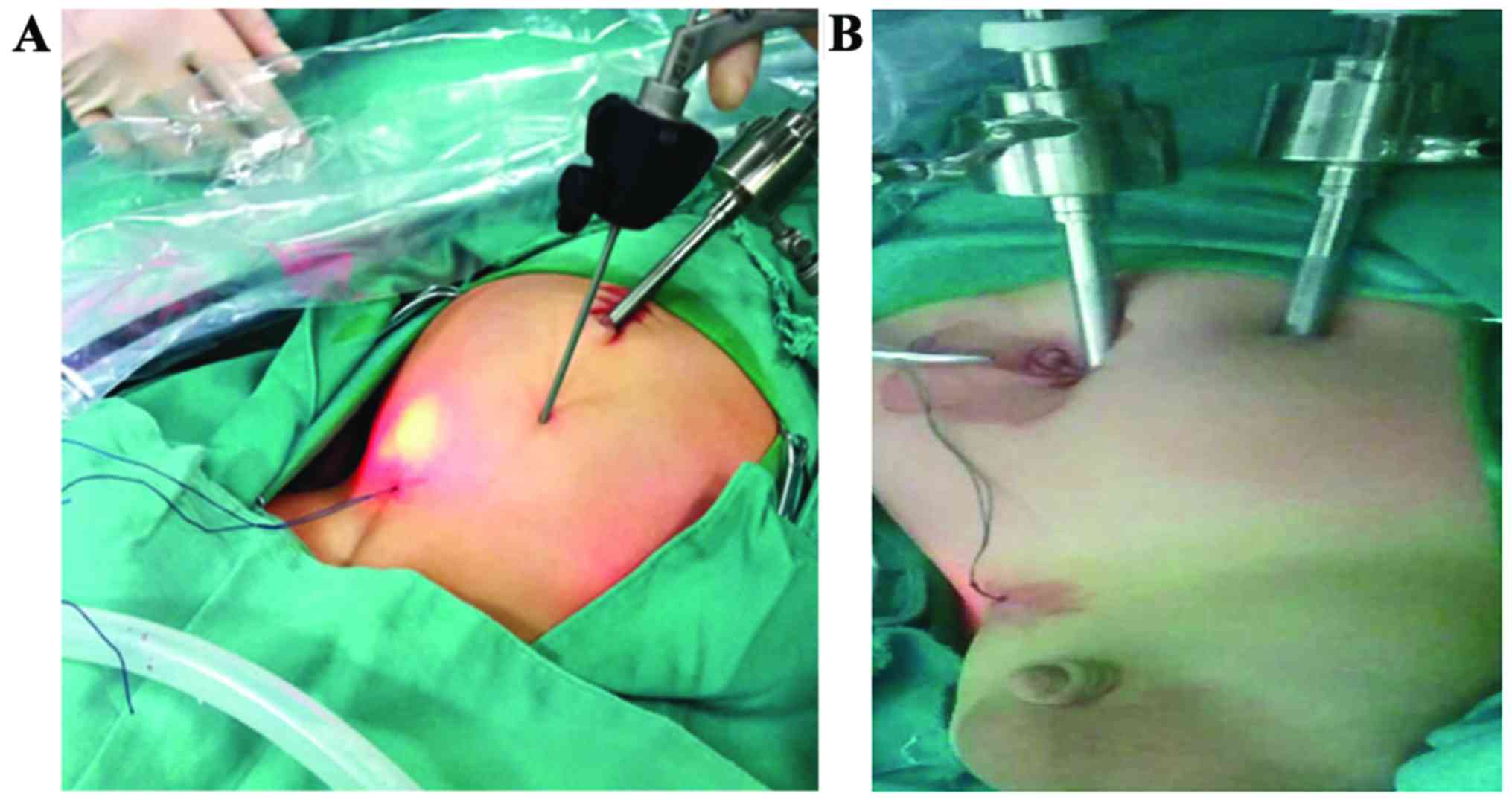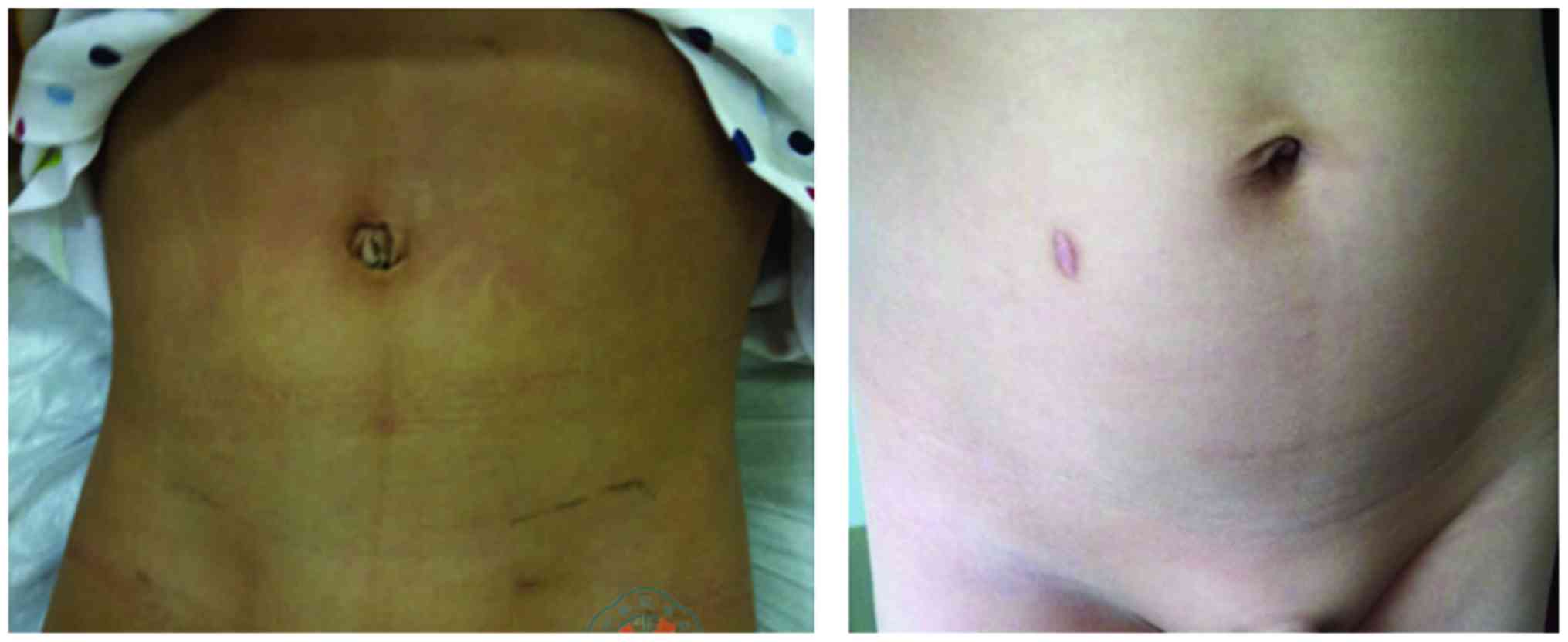
A comparative study of the single-site laparoscopic herniorrhaphy using needle instruments and double‑site laparoscopic herniorrhaphy in the minimally invasive treatment of inguinal hernias in children
- Authors:
- Fan Wang
- Sujun Liu
- Yingmo Shen
- Jie Chen
-
View Affiliations
Affiliations: Hernia and Abdominal Wall Surgery, Beijing Chao-Yang Hospital of Capital Medical University, Beijing 100043, P.R. China
- Published online on: January 16, 2018 https://doi.org/10.3892/etm.2018.5756
-
Pages:
2896-2900
-
Copyright: © Wang
et al. This
is an open access article distributed under the
terms of Creative
Commons Attribution License.
Metrics:
Total
Views: 0 (Spandidos Publications: | PMC Statistics:
)
Metrics:
Total PDF Downloads: 0 (Spandidos Publications: | PMC Statistics:
)
This article is mentioned in:
Abstract
The clinical effect of the single-site laparoscopic herniorrhaphy (SSLH) using needle instruments and double-site laparoscopic herniorrhaphy (DSLH) in the treatment of inguinal hernias in children were compared. A total of 1,010 children with inguinal hernias who were treated in Chao-Yang Hospital from March 2011 to December 2014 were selected. According to the operation method, these children were divided into the single-site group using needle instruments (n=508) and the traditional double-site group (n=502). The clinical indexes of the two groups were compared. All the clinical indexes (operation time, intraoperative blood loss, time of off-bed and discharge time) in the single-site group using needle instruments were significantly lower than those in the traditional double-site group (P<0.001, <0.001, <0.001 and <0.003, respectively), but the incidence rates of postoperative complications and contralateral occult hernia were at the similar level (P=0.249 and 0.221, respectively), so the difference was statistically insignificant. Patients in the two groups were followed up for 2 years and there was no recurrece in children in the single-site group while there was 2 in the double-site group. The SSLH using needle instruments is more effective with fewer traumas in the treatment of inguinal hernias in children than the DSLH. It is easier for children to recover from the herniorrhaphy with no scars, so it conforms more closely to the concept of minimally invasive herniorrhaphy, which can be promoted and applied for the treatment of inguinal hernias in children.
View References
|
1
|
Potts WJ, Riker WL and Lewis JE: The
treatment of inguinal hernia in infants and children. Ann Surg.
132:566–576. 1950. View Article : Google Scholar : PubMed/NCBI
|
|
2
|
Dallas T: Treatment of congenital infuinal
hernia. Ann Surg. 135:879–884. 1952. View Article : Google Scholar : PubMed/NCBI
|
|
3
|
Yang C, Zhang H, Pu J, Mei H, Zheng L and
Tong Q: Laparoscopic vs open herniorrhaphy in the management of
pediatric inguinal hernias: A systemic review and meta-analysis. J
Pediatr Surg. 46:1824–1834. 2011. View Article : Google Scholar : PubMed/NCBI
|
|
4
|
Montupet P and Esposito C: Laparoscopic
treatment of congenital inguinal hernias in children. J Pediatr
Surg. 34:420–423. 1999. View Article : Google Scholar : PubMed/NCBI
|
|
5
|
Zallen G and Glick PL: Laparoscopic
inversion and ligation inguinal hernia repair in girls. J
Laparoendosc Adv Surg Tech A. 17:143–145. 2007. View Article : Google Scholar : PubMed/NCBI
|
|
6
|
Tatekawa Y: Laparoscopic extracorporeal
ligation of hernia defects using an epidural needle and
preperitoneal hydrodissection. J Endourol. 26:474–477. 2012.
View Article : Google Scholar : PubMed/NCBI
|
|
7
|
Gilbert AI: An anatomic and functional
classification for the diagnosis and treatment of inguinal hernias.
Am J Surg. 157:331–333. 1989. View Article : Google Scholar : PubMed/NCBI
|
|
8
|
Liu SJ, Wang F, Zhu YL, Yang S, Shen YM,
Wang MG and Chen J: Analysis of minimally invasive SSLH using
needel instruments in the treatment of children with inguinal
hernias. Chin Dep Herniorrhaph Abdom Wall Hernias. 8:17–20.
2014.
|
|
9
|
Kimura T, Yamauchi K, Ihara Y, Sawai T,
Kosumi T and Yonekura T: Single-site laparoscopic herniorrhaphy
using needle instruments for inguinal hernias in children: A novel
technique. Surg Today. 42:100–103. 2012. View Article : Google Scholar : PubMed/NCBI
|
|
10
|
Zhou X, Song D, Miao Q and Shan W:
Transumbilical endoscopic herniorrhaphy for completely enclosing
inguinal hernias in children. J Pediatr Surg. 46:2417–2420. 2011.
View Article : Google Scholar : PubMed/NCBI
|
|
11
|
Shen W, Ji H, Lu G, Chen Z, Li L, Zhang H
and Pan J: A modified single-port technique for the minimally
invasive treatment of pediatric inguinal hernias with high ligation
of the vaginal process: The initial experience. Eur J Pediatr.
169:1207–1212. 2010. View Article : Google Scholar : PubMed/NCBI
|














